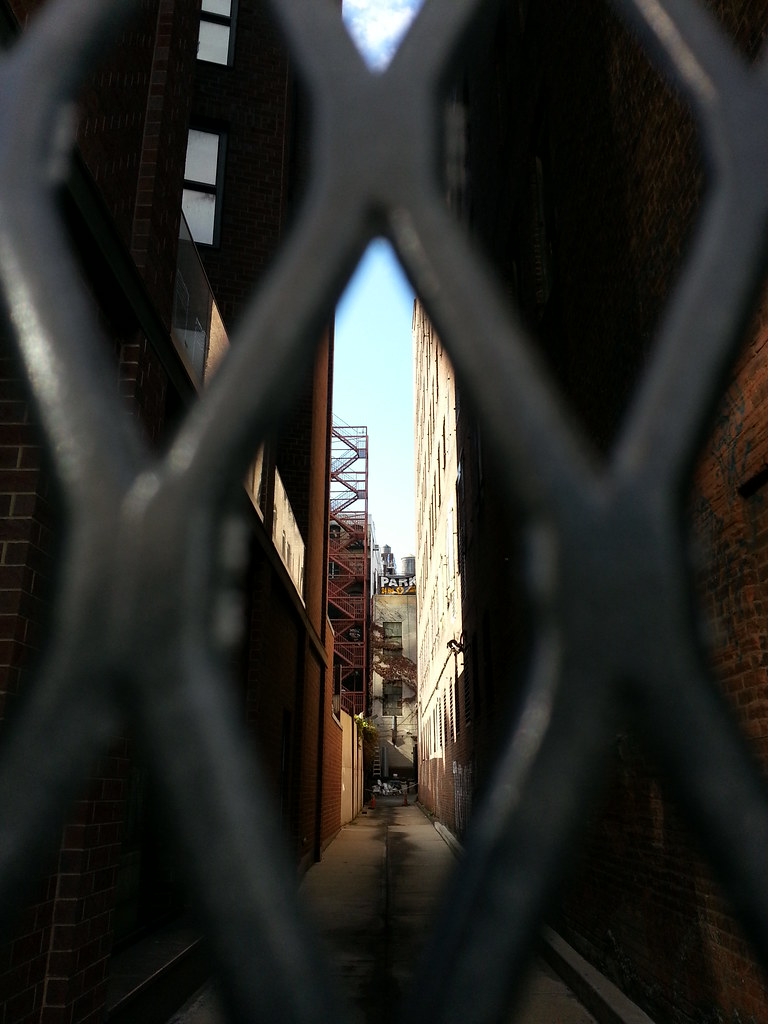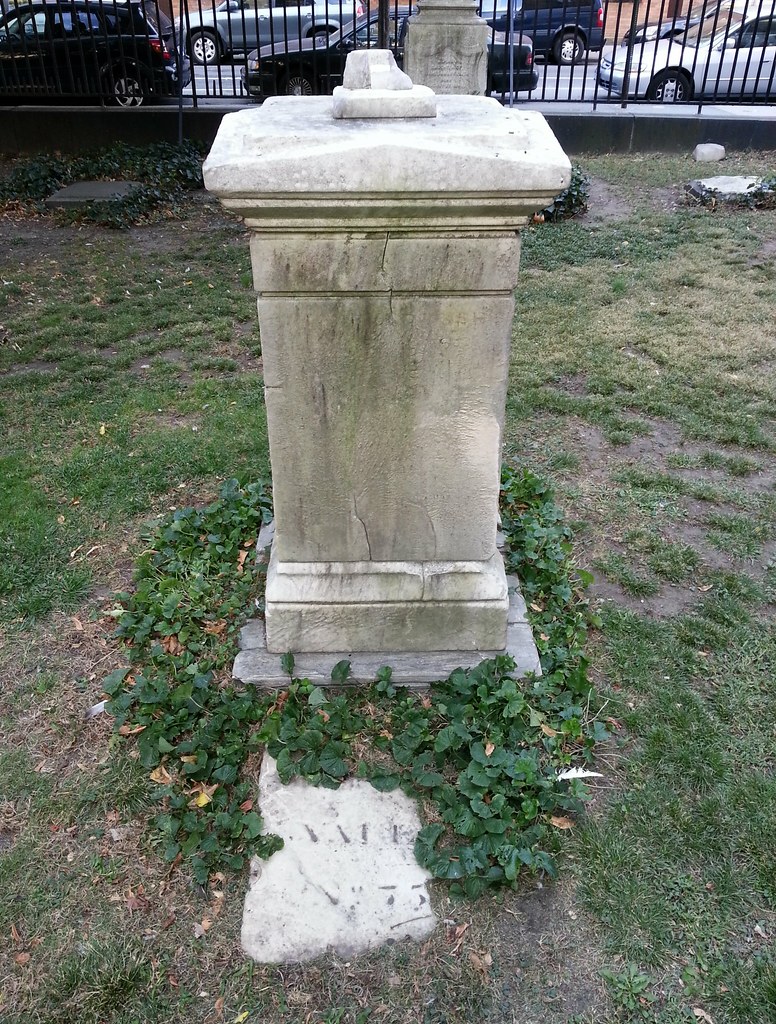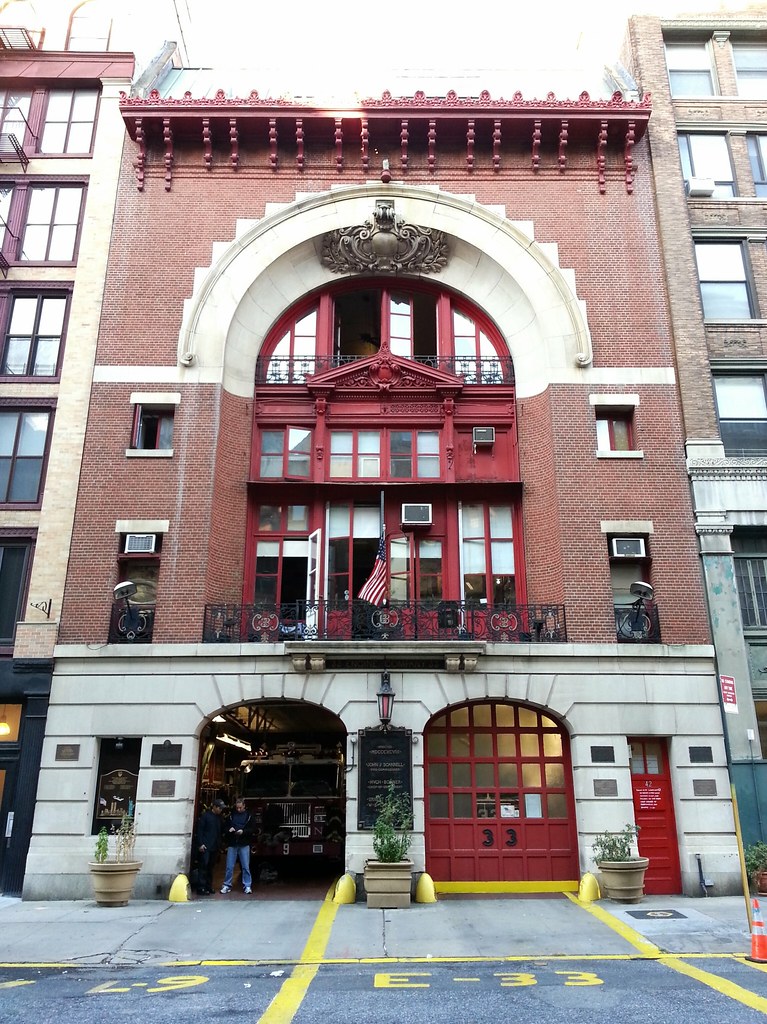

An 8-mile skateboard race through traffic down Broadway. Watch this hilarious Benny-Hillified video of the NYPD trying to stop the skaters.
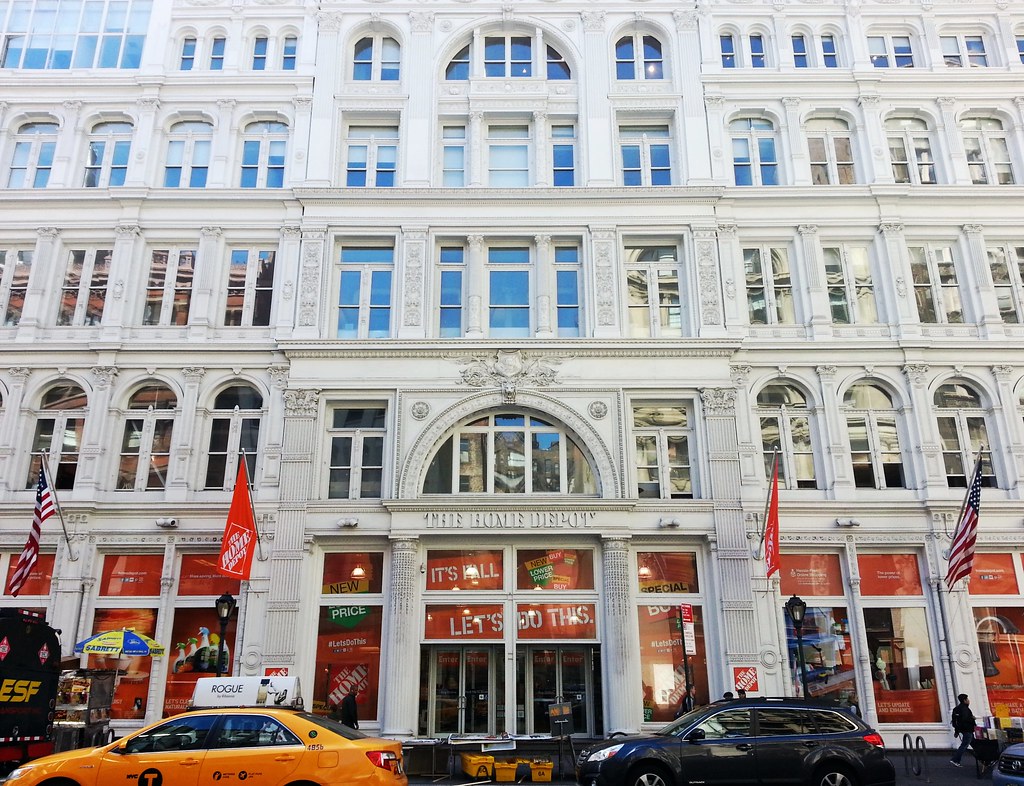
Situated on 23rd Street in what used to be the Ladies' Mile shopping district ("a nine-block-long stretch of architectural grandeur that once epitomized elegance in Manhattan"), this building, whose central section dates back to 1878, was originally the Stern Brothers dry goods store. In the mid-1980s, it was converted into office space and a showroom for the Hasbro toy company, which blocked off its first-floor windows to keep passersby from stealing glances at the next season's products. During the Hasbro era, the building also appeared in the movie Big as the home of the toy company where Tom Hanks's character worked.
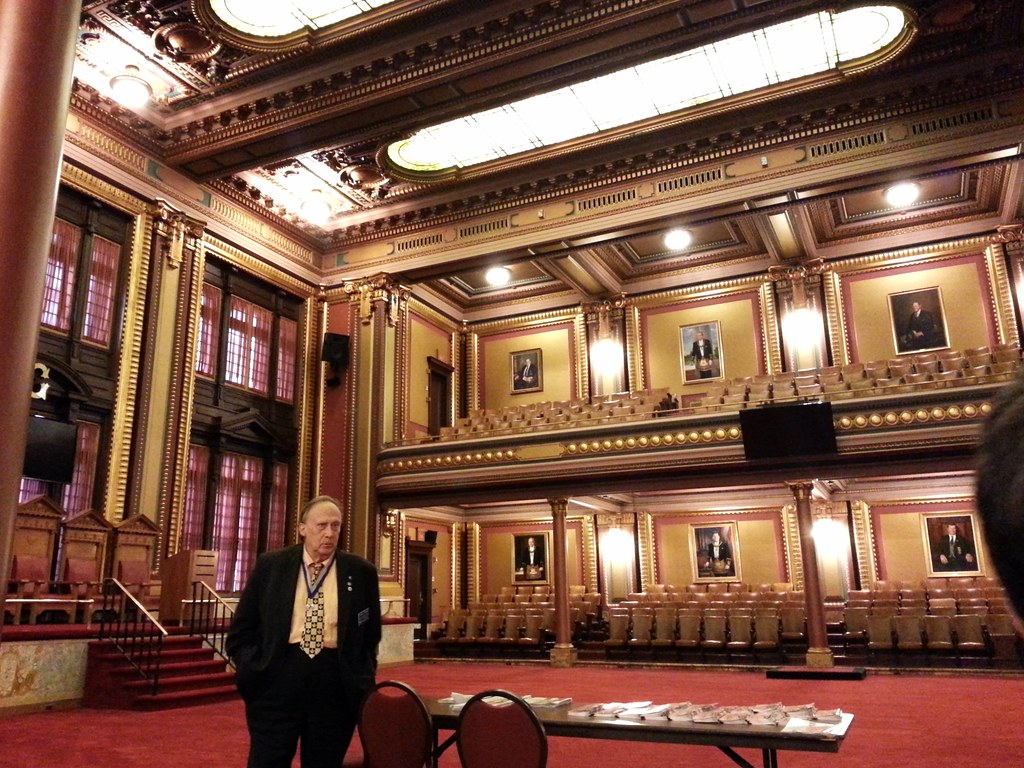
Magnificently renovated by the Grand Lodge of New York over the course of a decade in the 1980s and '90s, Masonic Hall on West 24th Street, with its "dozen stately chambers with a dozen architectural themes, where visitors travel from the Ile de la Cite to the Acropolis to the Valley of the Kings in the time it takes to ride an elevator", is open to the public for free tours on a regular basis. The is the Grand Lodge Room; you can see a few of my shots of other meeting rooms here, and you can see many more photos from two other visitors here and here.
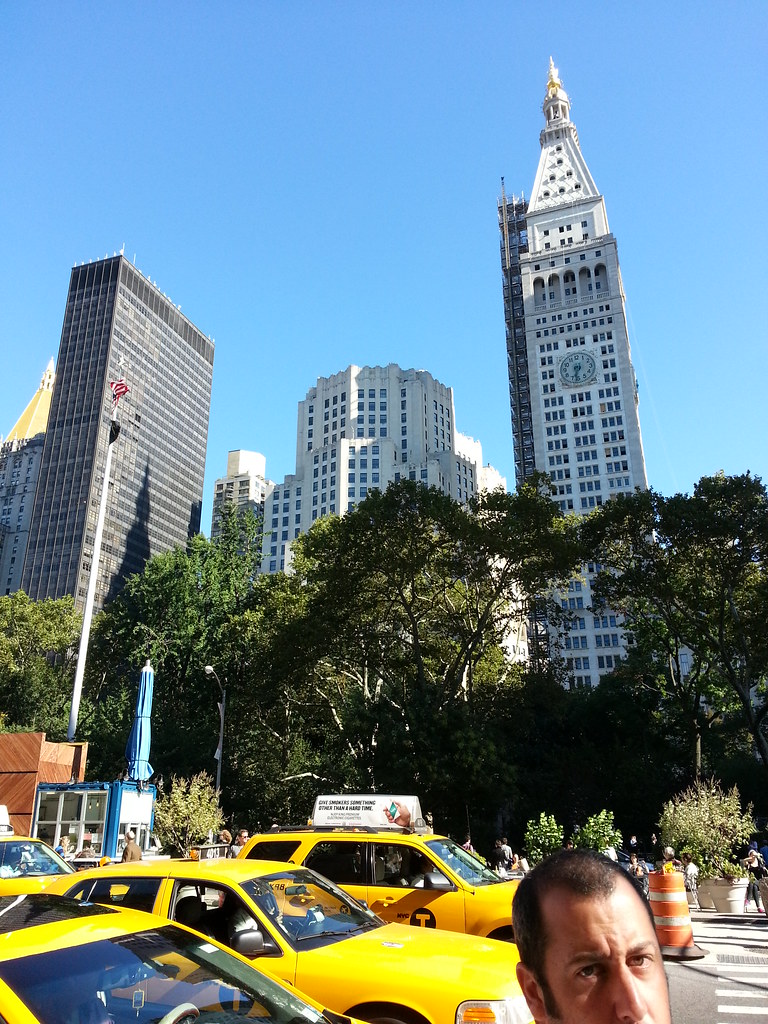
Modeled after St. Mark's Campanile in Venice, the Met Life Tower (at right) was the world's tallest building from 1909 to 1913. Notice the scaffolding on the north side; the tower is currently being converted into a hotel.
The odd-looking stump of a building to its left was originally designed to be a soaring, 80- to 100-floor skyscraper that would return the title of World's Tallest Building to the Metropolitan Life Insurance Company, but those plans faltered after the stock market crash of 1929. The 28-story structure that exists today is essentially just the base of the skyscraper that never was.

At right is the M(a)cIntyre Building, which the AIA Guide to New York City describes as "unspeakable eclectic: a murmuration of Byzantine columns, Romanesque arches, Gothic finials and crockets — the designer used the whole arsenal of history in one shot." More photos here.
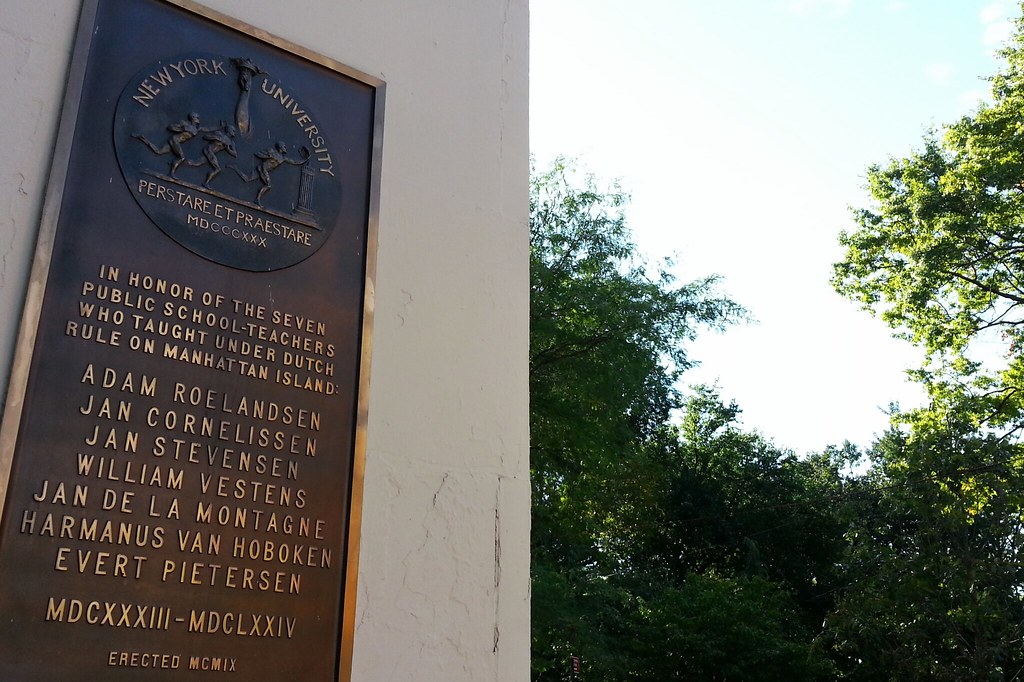
A tribute to "seven men [who] were among the first public school teachers in North America"

Until two years ago or so, this little stone column in the lobby of 2 Fifth Avenue, an apartment building by Washington Square Park, had a tall glass tube mounted atop it, forming an odd-looking, enigmatic fountain that reportedly flowed (on the occasions that it actually did flow) with the waters of the long-buried Minetta Brook.
Minetta Brook (also called Minetta Creek) was originally an aboveground waterway that ran through Greenwich Village on its way to the Hudson River (map). It was eventually covered over in the 19th century and incorporated into the city's sewer system. No one is sure exactly where the various sources that once fed the brook have now been routed (scroll down to the last section), or if they even still exist, but there have long been reports of flowing water being discovered during building excavations in the area, and of water seeping into nearby basements.
Reasons for the demise of the fountain above vary from source to source. Some say it was taken down during renovations and never reassembled. One doorman in the building told me it had dried up long ago, while another said it was so loud that the people upstairs complained.
2 Fifth Avenue wasn't the only building to pay tribute to the historical waterway with a fountain. The apartment hotel that once stood at 33 Washington Square West also had a supposedly Minetta-fed fountain in its lobby, sculpted by the same artist who carved Mount Rushmore. The dedication ceremony of this fountain in 1930 was apparently a big enough deal to be broadcast nationally over the radio.
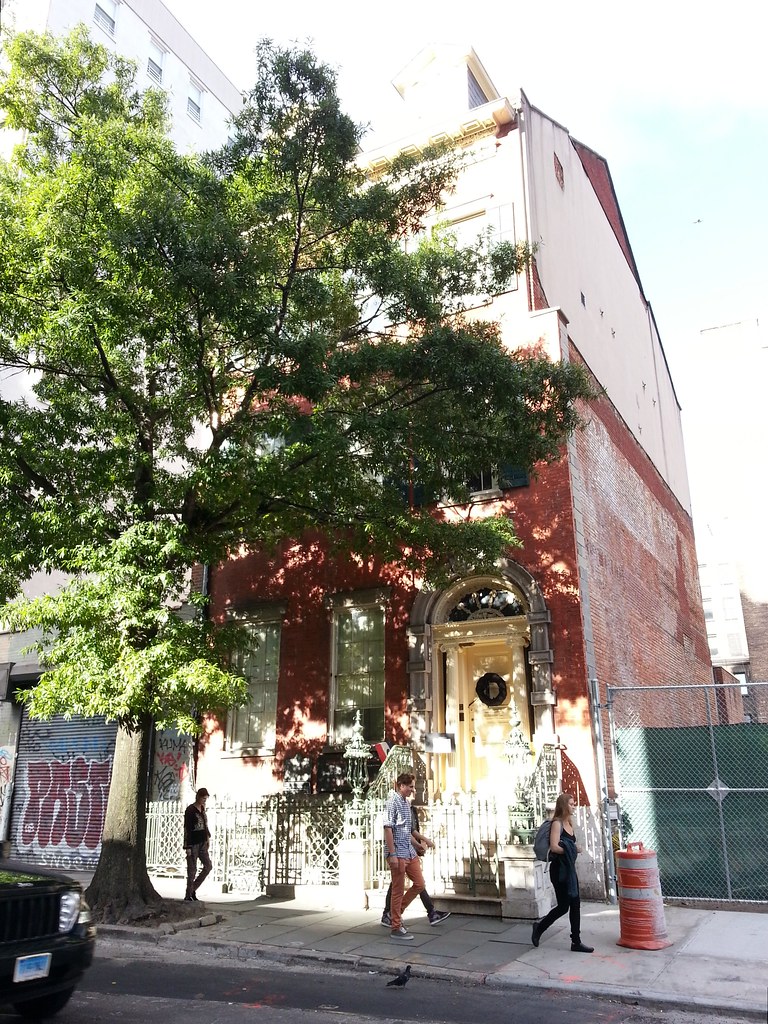
It doesn't look like much in this crummy photo, but this house is "the only nineteenth-century family home in New York City preserved intact — both inside and out." You can see some pictures of the interior here.

The New York Marble Cemetery — and it's open this time!
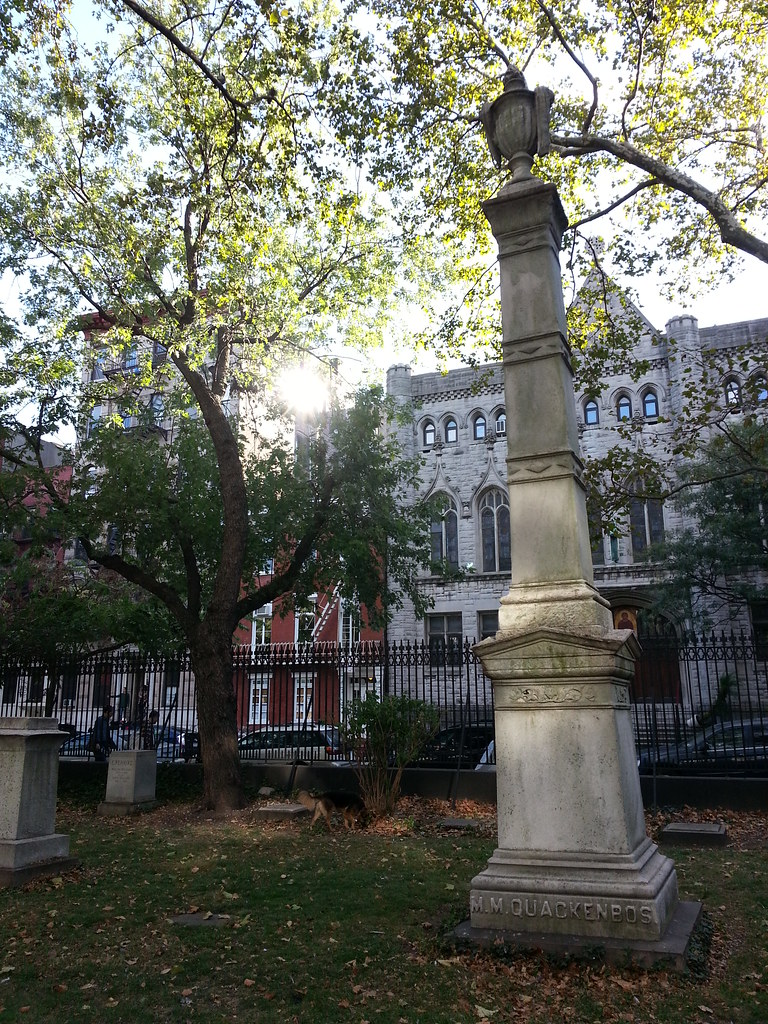
Mr. Quackenbos boasts perhaps the second-greatest name on the burial register of the New York City Marble Cemetery (not to be confused with the similarly named New York Marble Cemetery featured in the previous two photos), although the competition is fierce: Balthazar Andronicus Chesebrough, anyone? The best name, on the other hand, indisputably belongs to...
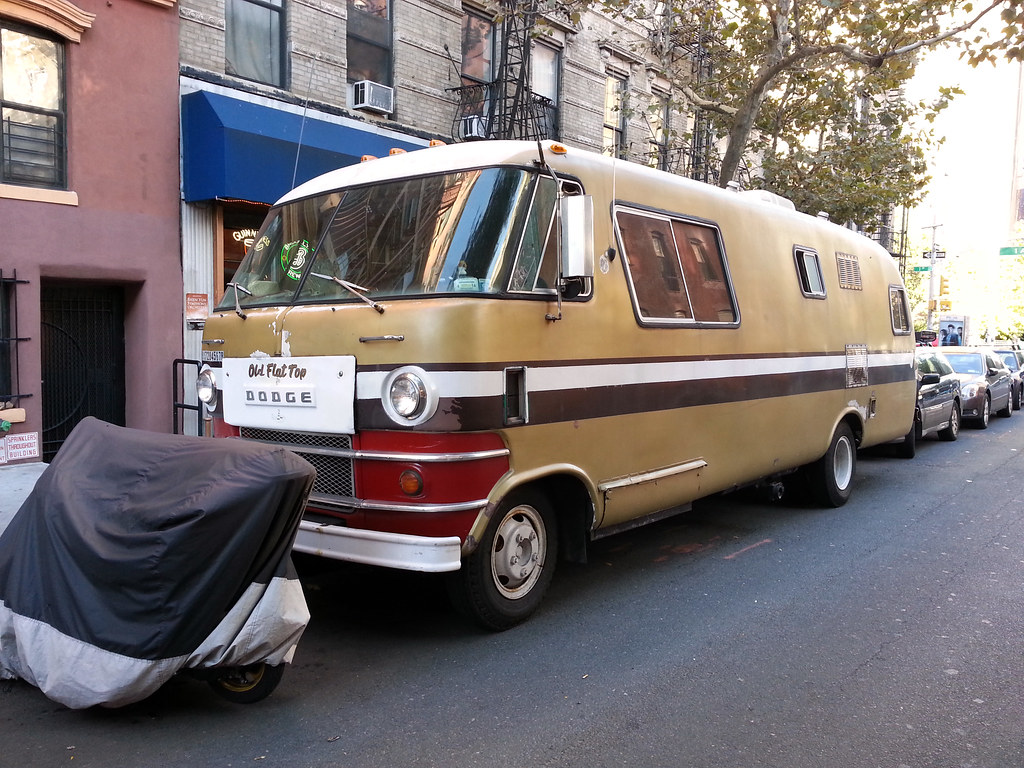
Ron Britt bought this 1971 Dodge Travco as a companion for the (now deceased?) "Free Willie" Nelson, a 1973 Dodge Mahal that he had "painted to resemble an orca whale, [with] a sound system that alternates Willie Nelson tunes with whale mating calls." Here are some more photos of Old Flat Top, and be sure to check out Mr. Britt's answers to the ten most frequently asked questions about the vehicle.
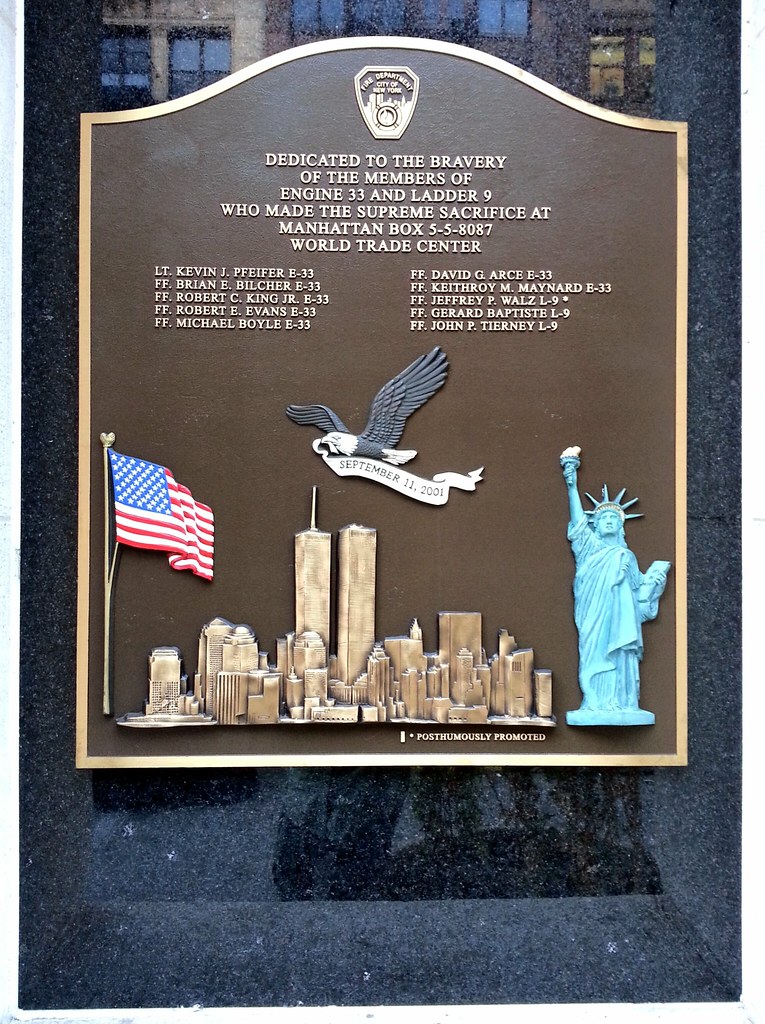
Just posting a better picture than I got the first time around.




